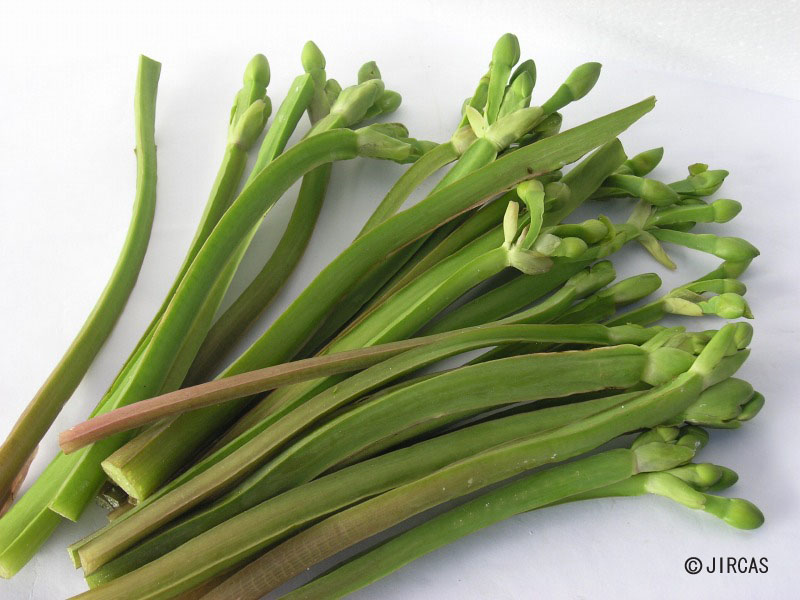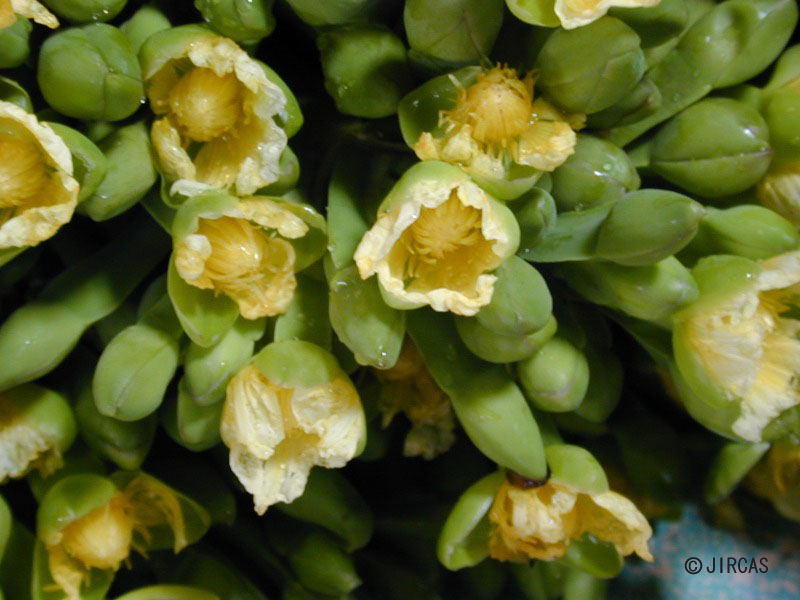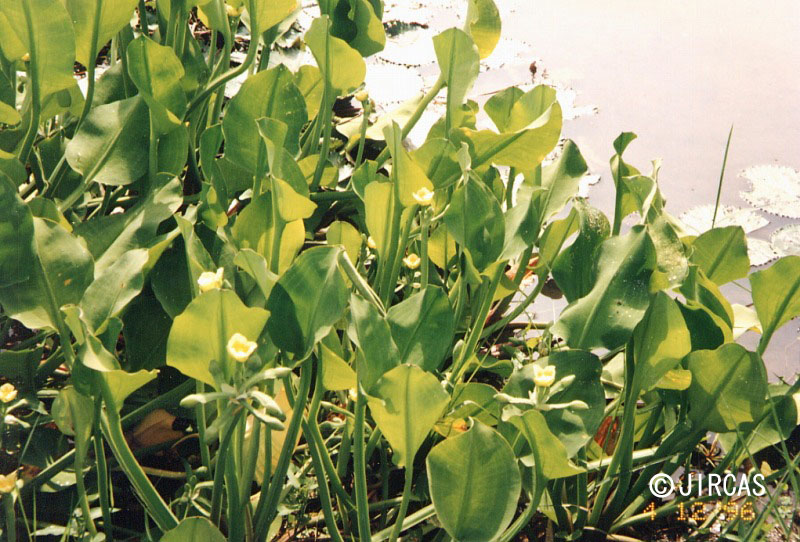Limnocharis flava (L.) Buchenau (Alismataceae)
- Scientific name
- Limnocharis flava (L.) Buchenau
- Family name
- Alismataceae
- Common name
- Kibana omodaka (Japanese)
- Local name
- Talabhat reusi
Erect perennial herb, aquatic to swampy terrestrial habitat, 20–70 cm tall, strongly tillering. Leaves rosette, glabrous; petiole 5–50 cm long, thick, trigonous, sheathing at base; blade orbicular, broadly elliptic, or ovate, 10–30 × 4–20 cm, yellow-green; main veins 9–13, with numerous transversely parallel lateral veins. Inflorescence umbelliform, with 3–15 flowers, peduncle 50–70 cm long, erect; flower in axil of membranous bract; pedicel 2–5 cm long. Sepals 3, ca. 2 cm long. Petals 3, ovate to orbicular, 1.5–2.5 cm long, yellow. Stamens many, surrounded by whorl of staminodes. Ovary superior, many-carpelled. Fruit compound, stalk down-curved, composed of ripe carpels forming a globose or broadly ellipsoid head, 1.5–2 cm in diameter, enclosed by sepals. Seeds horseshoe-shaped, 1–1.5 mm long, dark brown.
Common in marshy areas and abandoned paddy fields under full sun. Flowers are produced year-round. Propagated by seed sowing or sucker separation.
Young inflorescences are occasionally sold in local markets, but often harvested and eaten fresh with nam phrik (dipping sauces) or as a side dish with hot and spicy foods.
Young inflorescences are occasionally sold in local markets, but often harvested and eaten fresh with nam phrik (dipping sauces) or as a side dish with hot and spicy foods.






